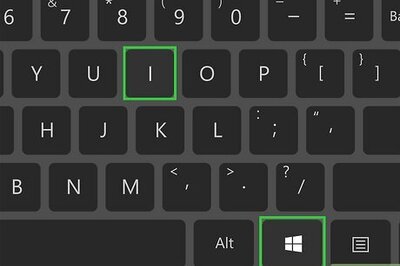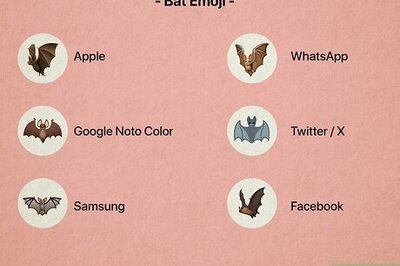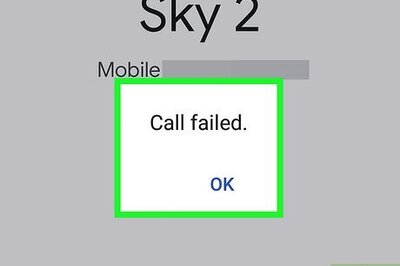
views
Common Zelle Scams
Sim swapping (stealing your phone number). Knowing just a target's phone number, a scammer contacts their mobile service provider, pretending to be the target, and asks them to transfer their phone number to a new phone. Once the scammer gains control of the phone number, they will receive all their text messages, including the two-step authentication codes sent by Zelle (and your bank) to verify logins. The scammer can then send themselves money straight from the victim's Zelle account.
Strangers sending money. Scammers use stolen credit cards to send money to random phone numbers through Zelle. After the target receives the money, the scammer sends them a frantic message, claiming they've sent it accidentally and need to get it back. The victim then refunds the Zelle payment, thinking the interaction is over. Later, when the actual owner of the credit card reports it stolen, the original amount is deducted from the victim's bank account as well.
Fake customer service and fraud. A scammer calls, emails, or texts a target impersonating Zelle customer service, claiming their account was compromised, needs to be verified, or that a payment didn't go through. If contact is made through email or text, the scammer usually provides a fake customer service number to call, or a link to a phishing website that looks like Zelle, and asks them to log in. Once the scammer convinces the target to divulge their username, password, and two-step verification code, they can send themselves money through Zelle.
Overpayment scams. Common on online marketplaces like Facebook Marketplace and Craigslist, this scam involves a scamming "buyer" overpaying an unsuspecting seller through Zelle with a stolen credit card. The scammer asks the seller to refund the overpayment, which the victim usually does. Once the card owner discovers it was stolen, the original amount will also be deducted from the victim's bank account.
Fake apartment rentals. This scam begins with a fake apartment listing that looks extremely real—often replicating a legitimate listing from another site. When an unsuspecting apartment seeker contacts the "landlord," the scammer convinces them to send money through Zelle to hold the apartment, and then the scammer disappears.
Fake job offers. The fake scammer posts an ad for a work-from-home job, and an unsuspecting job-seeker contacts them for an interview. The scammer does a fake interview over the phone, text, or video chat, offers the target a "job," and then tells them they'll need to send money for computer equipment, training, background checks, or other job-related costs through Zelle. Once the money is sent, the "employer" disappears.
Friend and family impersonation. Zelle scammers trick victims by impersonating people they know on social media or via text. They'll claim they need the victim to send them money to pay a debt or that they're in some kind of trouble.
Fake prizes. A scammer contacts a target via text, phone, email, or social media, claiming they've won money or a prize. The target is then instructed to send the scammer money via Zelle, often to cover fake fees, taxes, or verification.
Investment/cryptocurrency scams. These Zelle scams, which often occur via text or on social media, begin with a scammer contacting a target to claim they've made a ton of money on an investment like Bitcoin. They convince the target to buy in via Zelle, and then claim the investment lost value (or they disappear).
How to Protect Yourself from Zelle Scams
Contact your phone provider to create a password. To prevent somebody from hacking your Zelle account with nothing but your phone number, you must ensure your phone provider will not hand your phone number over to a stranger. Now that sim swapping is common, most phone providers allow you to create a secret password you must provide each time you call. Once you create a password, customer service will not answer any questions about or perform tasks on your account unless the caller provides your password. Choose a password that is very hard to guess—something arbitrary that nobody would expect. Don't use your social security number, the birthday of somebody you know, your favorite musical artist, your pet's name, or anything a scammer could find out.
If a stranger sends you money, don't refund or spend it. If someone "accidentally" sends you money on Zelle or overpays you for something they've bought from you, don't follow any of their instructions. Don't send them any money, follow any links, call any phone numbers they provide, or give them a refund. Instead, call Zelle directly at 1-844-428-8542 to report the incident and leave the money alone. The money will be automatically refunded to the account it was drawn from once the account owner's bank is notified by Zelle.
Don't use Zelle to send or receive money from strangers. Zelle is meant to be used with friends, family, and other people you trust, and is not safe to use with strangers.. Zelle does not have a "seller protection" feature like Venmo and PayPal, so whether you're the "buyer" or "seller" in a Zelle scam, Zelle won't be able to protect you or refund money stolen from your bank account.
Use an authentication app instead of SMS for 2-factor authentication. If your bank or other services you use allow you to use alternative verification apps like Authy, Google Authenticator, or Microsoft Authenticator, use that instead of receiving the code via text. This involves opening another app on your phone to receive a secure confirmation code—even if somebody steals your phone number with a SIM-swapping attack, they can't log in to your account without having your phone in their hand.
Use additional security measures with your bank. Most banks now offer 2-factor authentication, which adds an extra layer of security to your account. Also, enable text notifications through your bank so you can receive instant fraud alerts or be notified each time a transaction is made.
Don't click links or call phone numbers from text messages or emails. It's pretty easy for a scammer to create a convincing text or email containing a link to a phishing website. If you receive a fraud alert or notification from Zelle or your bank, don't call the number or click the link provided. Instead, call the phone number on the back of your credit or debit card so you know you're talking to somebody legitimate. You can also call Zelle directly at 1-844-428-8542.
Protect your passwords. Did you know that scammers may be able to see everything you type when you're connected to public Wi-Fi? If you log in to Zelle or your bank account from an unsecured network, a hacker may be able to capture your password and use it to access your account. When you need to need to log in to sensitive apps and websites in public, stick to your mobile data plan, or use a VPN.

















Comments
0 comment